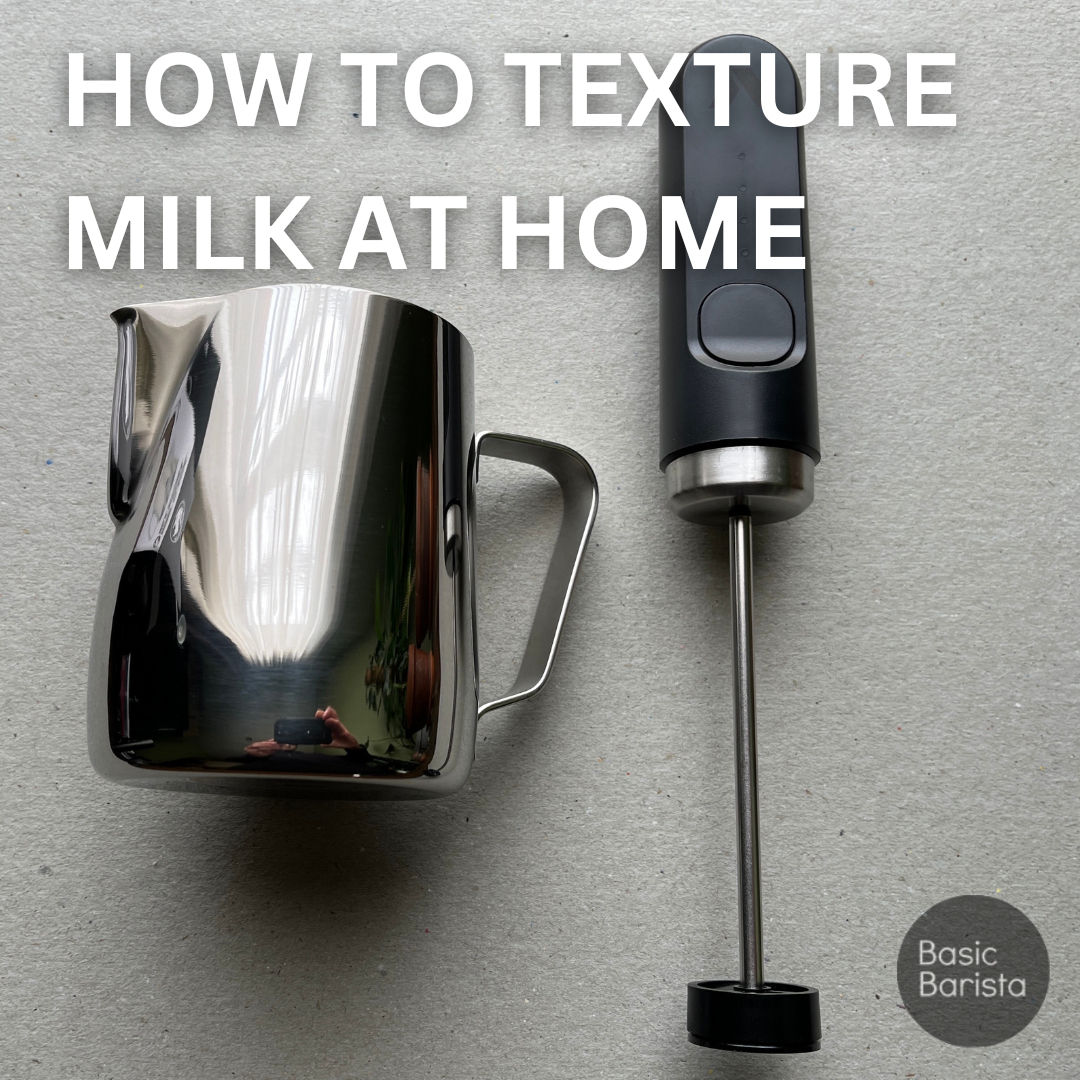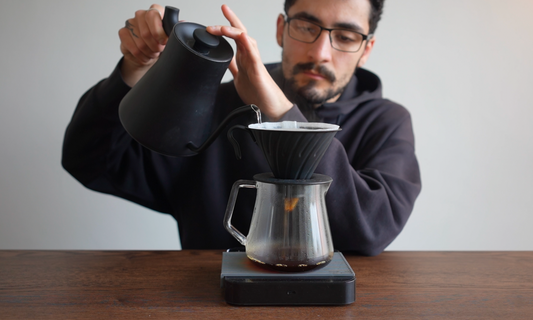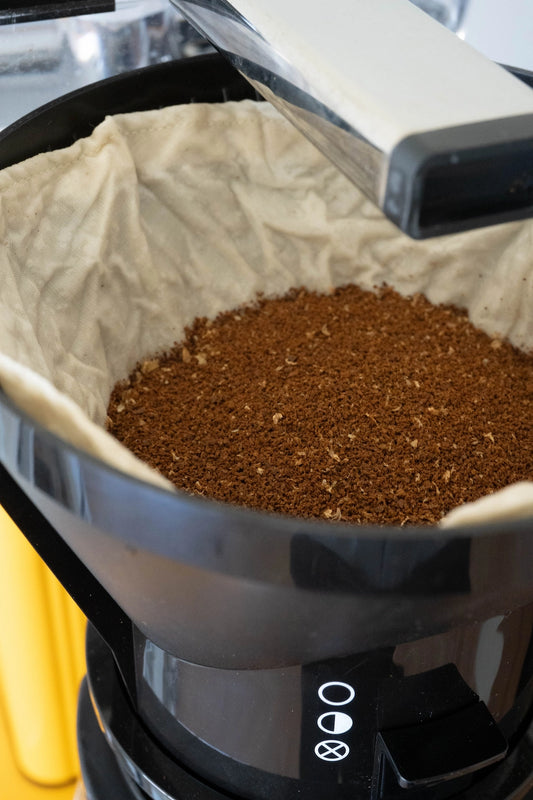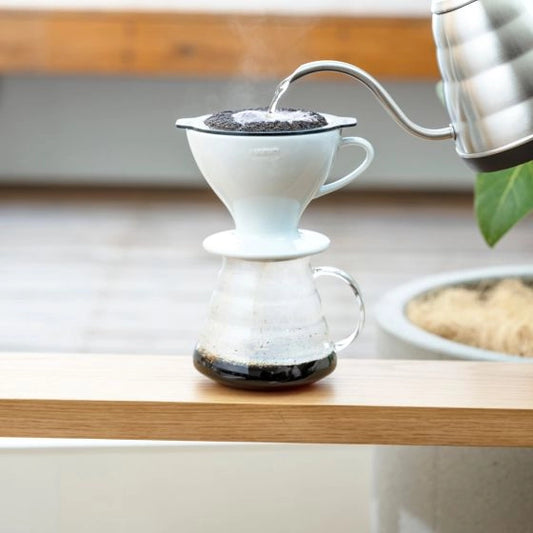
How to pour great latte art at home?
Share this article
When it comes to creating café-quality latte art at home, one of the most important elements is producing microfoam with the right texture and consistency. In coffee shops, baristas use steam wands on espresso machines to create smooth, glossy microfoam that allows them to pour all sorts of latte art patterns, including hearts, tulips, and rosettas. But, is it possible to achieve the same results at home without investing in commercial-grade barista equipment?
There are several ways for home coffee drinkers to make milk foam. One of the more popular methods is to use a French press. Essentially, after adding milk that has been heated to the required temperature (usually between 55°C and 65°C to the French press, you can repeatedly pull the plunger up and down to incorporate air into the liquid. The more you pull the plunger, the foamier the milk will be.

Another method is to use the Nanofoamer, which is similar to a small electric whisk. By placing the propeller into heated milk and rapidly spinning the whisk, you can easily incorporate air into the liquid to produce foam. This often results in a much more consistent result compared to the french press.

Other common techniques include using automatic milk frother jugs, which can heat and aerate milk to different consistencies, as well as stovetop milk steamers that work similarly to steam wands on espresso machines. However, it should be noted that stovetop steamers are unable to create the same levels of pressure as commercial espresso machines, so the microfoam produced may not be of the same quality and this not to mention how bulky and more expensive they are compared to the Nanofoamer.

Finally, home espresso machines with steam wands can also be used to produce high-quality microfoam, but these machines can be very costly. Cheaper domestic machines advertise their capability to steam milk but due to the lack of pressure you are often left with disappointing results.
How to texture milk at home like a pro:
To texture milk at home like a pro, you will need to start with high-quality milk and a frothing pitcher. Place the milk in the frothing pitcher and use a milk frother to froth the milk until it reaches the desired texture. This is the exact same when using the Subminimal Nano Foamer with the one exception of heating your milk prior to frothing.
If you have ever used a coffee machine wand the experience of using the Nano Foamer is very similar and incredibly intuitive.
- Place your jug on a stable surface and hold with one hand, fully submerge the screen side in the milk before turning on.
- Turn on and tilt the Nano Foamer to create a vortex.
- Slowly move the Nano Foamer closer to the centre to aerate the milk more and back to the side for less aeration.
To create latte art, pour the frothed milk high breaking the surface of a freshly brewed cup of espresso in a circular motion. To create the contrast of the 'white' component of latte art you will need to move the milk pitcher closer to the espresso and pour slower.
This is because the foam in the milk actually sits on top of the coffee, practice and patience are key to becoming a pro at texturing milk at home, don't get too disappointed if your latte art isn't where you want it to be straight away you will only get better the more you practice.
To create high-quality microfoam at home, it's important to start with cold milk, as this means the proteins in the liquid will be fully intact. Additionally, you'll need to use a pitcher that's slightly bigger than the amount of milk you need, so that there is enough room to spin and aerate the liquid. The placement of the steam wand tip is also important; if it's placed too far above the surface of the milk, it will produce larger bubbles and not the smooth, glossy microfoam needed for latte art.
By following these tips and experimenting with different methods, you'll be able to create café-quality latte art at home in no time.

I am personally a huge fan of the Subminimal Nanofoamer, I think it solves a lot of problems around texturing milk at home and if anything I think this is a good thing for the wider coffee community, the easier it is to make a good coffee, I believe will have more people drinking coffee, joint the community and all in all appreciate everything that goes into their morning brew 😊





